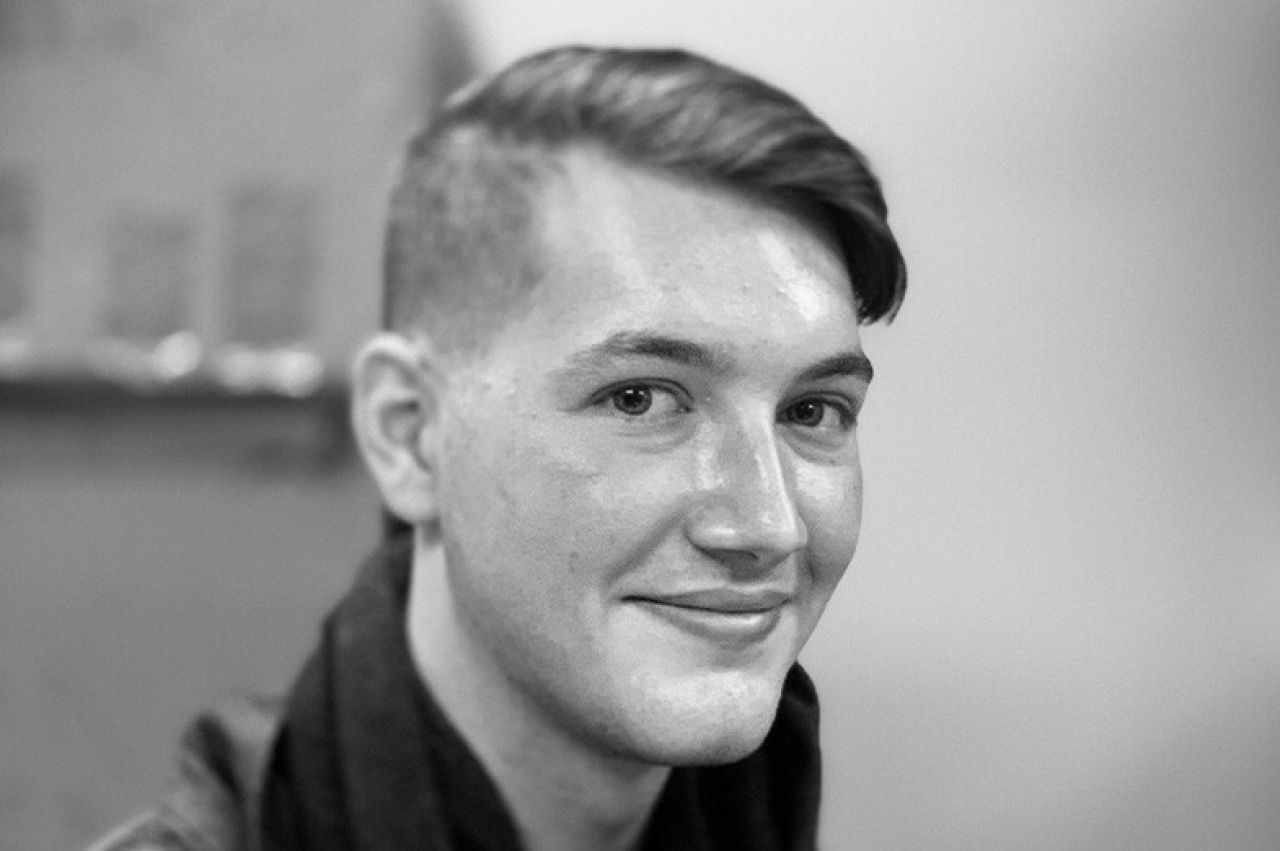February 18, 2022
Art history intern’s research uncovers origin of cast-iron collection

When Ronan Shaw, a sophomore majoring in art history, began his internship with the College of Arts and Architecture’s Center for Virtual/Material Studies (CVMS) in the fall of 2021, he didn’t quite know what to expect.
A few months later, he curated, identified and displayed a former Department of Art History faculty member’s architectural artifacts, the origins of which were a bit of a head-scratcher.
At first, Shaw’s daily tasks were mostly technical, but as his knack for in-depth research and enthusiasm for a defining project came to the forefront, Carolyn Lucarelli, manager of the CVMS, asked him to research former faculty member Winston Weisman’s collection of cast-iron architectural fragments.
“Where these truly came from was almost like an unsolved mystery,” Lucarelli said. “I have always been fascinated with these fragments and for Ronan I thought this would be a perfect project.”
The collection was believed to be from a building in New York City designed in 1849 by architect James Bogardus, a pioneer of American cast-iron architecture, but as Shaw meticulously traced the pieces, he made a surprising discovery – Weisman’s collection was actually from a building in the SoHo part of New York City designed by Daniel Badger, founder of American Iron Works.
Because Weisman retired in 1972 after almost 15 years at Penn State, some of the pieces were on display in faculty offices and the others were scattered throughout the department’s home in the Borland Building. After the closing of the department’s Lord Library in 2019 and shifting of faculty and staff offices, the collection resurfaced.
“Being asked to research these pieces was incredibly exciting,” Shaw said. “It really helped cement my love of research and it taught me how interesting and engaging research can be.”
With the help of Lucarelli and CVMS digital support specialist Catherine Adams, Shaw began the project by simply gathering and cleaning the pieces. From there, he used historical architectural databases, journals and photos to compare the pieces before conducting multiple interviews with art historians.
His discovery that the cast-iron fragments came from a Badger building in New York City is backed by the Department of Art History and the pieces are on display in the hallway of the top floor of the Borland Building.
“Simply put, the information we had on these pieces was incorrect,” Shaw said. “It was rewarding to see how, through my hard work and collaboration with others, I was able to create something and find the truth to these artifacts.”
Lucarelli said that Shaw’s project and time as an intern was “exemplary” and that his success highlights the potential of undergraduate research.
“His work involved this sense of sleuthing and detective work, which he fully embraced,” Lucarelli said. “He was a great presence in the department and, as this project shows, a really hard worker.”
Students interested in internship opportunities with CVMS can contact Lucarelli at cj8@psu.edu

